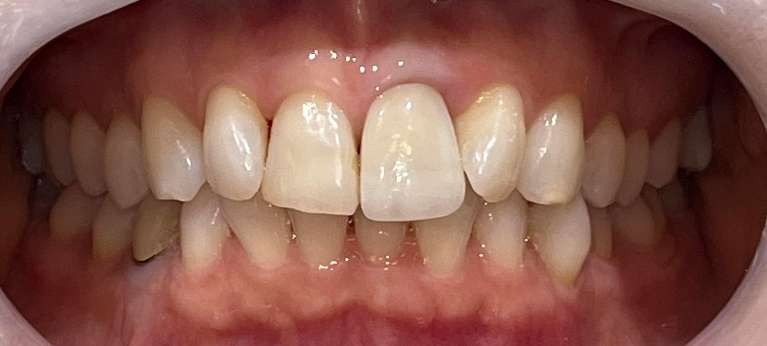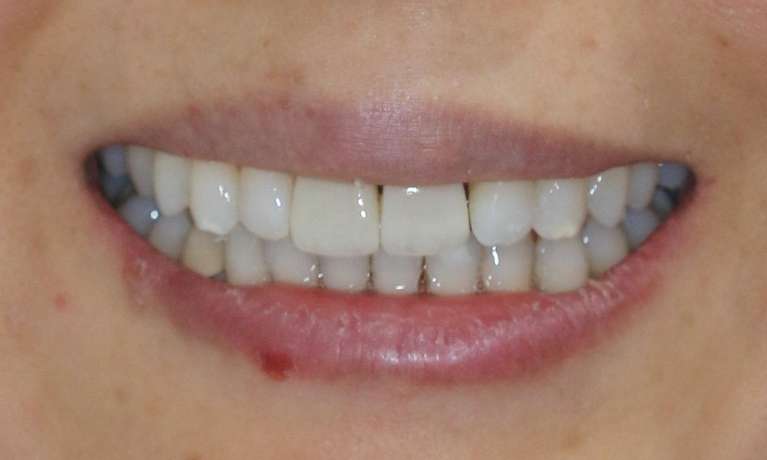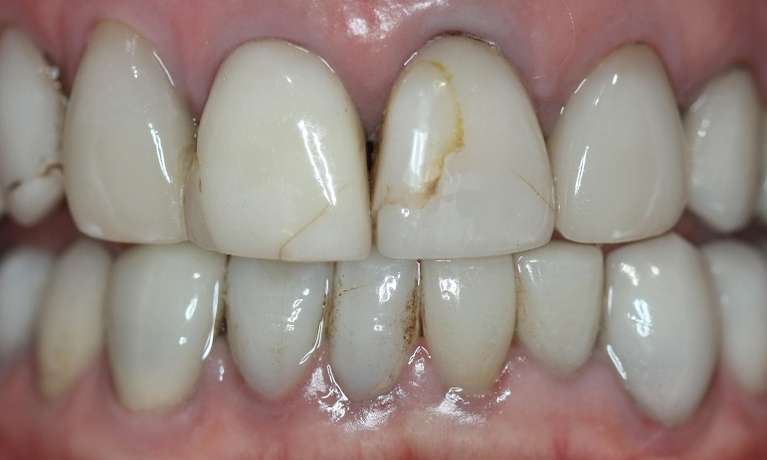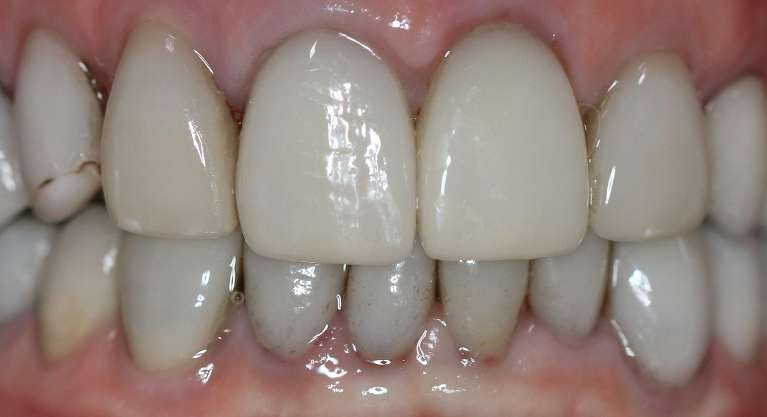
Ceramic Veneers
What are veneers?
Veneers are a thin ceramic facing that is cemented in the front of a tooth to improve its appearance. With modern ceramic materials, the veneer can be shaped and coloured in such a way as to match the natural tooth appearance to achieve a highly aesthetic result. They are permanent, lasting up to 15 years, but may need replacing after that.
The reason a tooth requires a veneer can be:
- Staining that cannot be removed (ingrained stains e.g., tetracycline stains)
- The tooth is misshapen and placing a veneer alters the shape to give a more harmonious smile
- The tooth has a history of extensive decay and using standard filling does not give a satisfactory aesthetic result.
- The tooth is not aligned properly with adjacent teeth in the smile and a veneer can
- give the illusion of alignment by making the tooth more prominent.
In most cases, a thin layer of enamel has to be removed from the front of the tooth before the veneer to be cemented on.
A ceramic veneer was placed on this damaged canine restoring the natural smile.


Before: Damaged Canine After: Veneer Placement
What are the Advantages of ceramic veneers?
- Highly aesthetic appearance replicating the colour and translucency of natural tooth enamel
- The ceramic material is highly resistant to staining over time and does not lose its sheen and natural appearance.
- The ceramic material used for veneers is as strong as natural tooth enamel and if used correctly, shows a high resistance to chipping and fracturing. Ceramic veneers can therefore last up to 15 years without failing.
What are the Disadvantages of ceramic veneers? :
- The tooth in most cases, has to have a thin layer (up to 0.8mm thick) of enamel removed from its front surface to allow space for the ceramic veneer. Removal of enamel is an irreversible process which commits the tooth to needing a veneer on a permanent basis.
- In case of extensive fracturing or chipping, a ceramic veneer might not be repairable and need to be replaced.
- Ceramic veneers must be bonded onto teeth that have sufficient enamel. If there is insufficient enamel onto which the veneer can be cemented, it is more likely that the veneer will debond and fail.
Frequently Asked Questions
Veneers are a thin shell of material bonded on the front surfaces of teeth to improve their appearance.
Veneers can be made of ceramic or resin. They are tooth- coloured and their shapes and contours can be customised to improve the appearance of the natural teeth that they cover.
Veneers can be placed over 1 or 2 appointments and provide a relatively quick solution to improve an unaesthetic smile. However, each case must be assessed thoroughly to ensure that veneers are the most appropriate treatment modality.
The durability of veneers depends on the material they are made from and on the condition of the teeth they are placed on.
Resin veneers are made from a plastic-like material (composite resin). They last up to five years, are more prone to staining and chipping. They require regular polishing and maintenance to keep their lustre.
Ceramic veneers made from specialised dental porcelain can last up to 15 years. They do not stain easily but can chip or fracture if excessive forces are applied to them. While less maintenance is needed for ceramic veneers to keep their lustre, chipping or fracturing is harder to repair and might require a full replacement.
The condition of the teeth on which the veneers are placed will affect the veneers' lifespan. Teeth need to be free of decay and gum disease before veneers are placed. Decay in the teeth can lead discoloration of the venner or to the veneer falling off prematurely. Gum disease can lead to the teeth becoming loose and falling out.
Before veneers are placed, it is essential that a full oral assessment is made to ensure teeth are free of decay and gums are healthy.
Good oral hygiene and regular professional cleans are also critical to maintain the lifespan of veneers.
Veneers are a thin layer of tooth-colored material placed on the front of teeth to improve their color and/or shape. They are used to create a more esthetic smile.
Resin veneers consist of a material similar to plastic. They are placed onto the tooth directly by the dentist and shaped to give the desired result. The tooth has to be treated with an acidic gel so the resin material can chemically bond to the tooth enamel. In some cases, a thin layer of the tooth enamel might need to be shaved off so that a sufficient thickness of the resin material can be added to the tooth to obtain the desired change in color or shape. Resin veneers are considered to be a direct technique and can be placed in a single visit. Resin veneers are however more prone to staining over time. The material can also fracture or chip over time. Resin veneers once placed with require regular maintenance to retain the desired effect.
Ceramic veneers consist of a thin layer (at least 0.8mm) of ceramic that is held onto the tooth by a cement. Ceramic veneers are manufactured in a dental laboratory after the dentist has prepared the teeth and sent a scan or impression of the prepared teeth. This is considered an indirect technique and require 2 visits for completion. Since the ceramic veneer has to be of a minimum thickness, some tooth enamel usually has to be removed from the front of the teeth to achieve the desired result. Ceramic veneers are quite durable and do not stain easily. They usually require less maintenance than resin veneers and provide a long-lasting esthetic result.
Our Team
-

Dr. Christine Yew BDS (U. of Melbourne), BSc (McGill U.)
School/Training
Dr Yew has over 20 years of experience in dentistry, graduating with Honours from the University of Melbourne in 2001.
Dr Yew is registered with AHPRA (the Australian Health Professional Regulation Agency: registration no. DEN0001023296) and is a member of the ADA (Australian Dental Association).
Dr Yew has been involved in the ADA mentoring programme where she volunteers her time to offer advice and guidance to recently graduated dentists. Currently, she is a clinical supervisor for 3rd year dental students at the University of Melbourne and is also a member of the ...
Read More






